
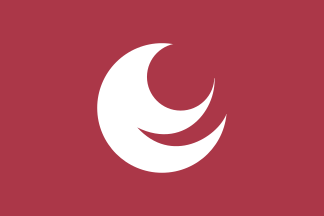

75 Peace Monuments
in Hiroshima (Japan)



75 Peace Monuments
in Hiroshima (Japan)
This web page describes about 75 peace monuments in Hiroshima.
Compare Nagasaki (about 50 monuments) & Yad Vashem Holocaust Memorial (about 30 monuments).
Click here for monuments related to Sadako Sasaki [1943-1955] & origami peace cranes.
Click here for a map and guide to 56 "cenotaphs & monuments" on the Virtual E-Tour.
Click here for PDF "Hiroshima Pocket Peace Guide" to 46 "Memorial Monuments."
Click here for "Internet Tour of Peace monuments in Peace Memorial Park."
Shining Hope for Tomorrow, a collection of poems & pictures of 100 monuments in Hiroshima.
Click here for monuments related to Hiroshima but not in Hiroshima.
Click here for peace monuments in Nagasaki. / Click here for monuments related to Nagasaki but not in Nagasaki.
Click here for peace monuments in Okinawa. / Click here for peace monuments in the rest of Japan.
Click here for all examples of the phrase "peace memorial."

N.B. There are numerous peace monuments in Hiroshima; most but not all are shown below.
Right click image to enlarge.


August 6, 1945 Genbaku Dome, Hiroshima (Japan). Also called A-Bomb Dome. Industrial Promotion Hall became iconic (an "unintentional monument") the moment it was damaged by the atomic bomb. Left unrepaired. Designated a World Heritage Site in 1996. #38 of 56 "cenotaphs & monuments" on the Virtual E-Tour. Click here for other structures which remain from before the bomb.
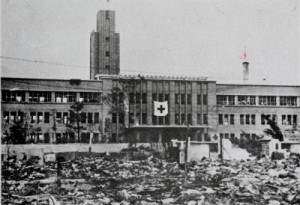


- Red Cross Hospital, Hiroshima (Japan). Constructed in 1939 by Fujita Corporation. Demolished & replaced in 1993. Severely damaged on August 6, 1945, when it was " turned into atemporary relief station. However, medical supplies were soon exhausted, and most of the doctors and nurses were killed or injured, so the vast majority were able to receive no treatment. Untold numbers died waiting for attention. In September 1956 a special medical facility,Atomic Bomb Hospital, was added to offer healthcare, examinations and treatment specifically to A-bomb survivors." /// "In September 1993, a northern section of the third floor where the steel frame was bent by the A-bomb blast was cut away, relocated within the hospital grounds, and preserved as monument [as shown by the right image]." /// "On the night of 01 June 2013, Fujita Corporation moved a 45 tonne monument containing a section of wall exposed to the 1945 Hiroshima atomic bomb blast from its position outside the red cross Hospital of Hiroshima to a new home in a memorial park 140m away."

1945-1946 "Shortly after the war, John D. Montgomery [1920-2008] and [Major] S. A. Jervie became advisors to Hiroshima Reconstruction Planning, and proposed to the City Reconstruction Planning Commission. Montgomery was a lieutenant in the U.S. military government stationed in Kure in Hiroshima Prefecture. In May 1946, he was invited by the City of Hiroshima to be a reconstruction planning advisor, and proposed several plans. His planning idea was to preserve the former Industrial Promotion Hall (now the Atomic Bomb Dome) and to build 'peace memorial facilities.' His planning idea did not play a direct role in adopting particular reconstruction plans or in building a 'peace memorial city,' but in the years to come, it significantly influenced the reconstruction planning of the city. S. A. Jervie was a major in the Australian army, which was a part of the British Commonwealth Occupation Force (BCOF). In September 1948, in his role as an advisor, he proposed to preserve buildings and structures that had been damaged by the atomic bomb. In July 1947, Miles Vaughn, vice president of United Press International (UPI), proposed a Pikadon Memorial Park and Pikadon Memorial Museum. In January 1948, Tam Derring, Director of the Recreation and Park Planning Consultancy Office in Washington, DC, made a written proposal to construct a peace monument and an b>Atomic Bomb Age Memorial Hall near the hypocenter... What was common among the proposals made by these people from overseas was that they insisted that structures and spaces affected by the atomic bombing should be preserved and commemorated. Their proposals later played an important role in forming the concept of making Hiroshima a Peace Memorial City." [From a paper by Prof. Norioki Ishimaru, Hiroshima International University.]

1930 - Earthquake Memorial, Tokyo (Japan). Designed by Chuta Ito. Japanese architect Kenzo Tange: "At that moment, opinions were more inclined to constructing a monument like a peace memorial tower centering a memorial hall. An architect of the UK forces, an advisor of Hiroshima City, constantly insisted on constructing something like a five-storied pagoda. When he came to see me in Tokyo, I took him to the Peace Memorial Tower for the Earthquake Victims in Tokyo. Outraged, I barked at him and said that this was what he and others wanted." /// "This architect of the UK forces seems to be Major S.A. Jervie, an architect of the Australian forces. Attention has to be paid to the utter difference in character between the Earthquake Memorial and the Hiroshima Peace Center. The first is where you mourn for the victims of the Great Kanto Earthquake [in 1923] and not where you pray for no more earthquakes. After all, there's no use praying since earthquakes are natural disasters. On the contrary, the latter is where you pray for no more wars. War is preventable if you try; it's not a natural disaster. Tange asserted: 'The purpose of this facility is not to mourn, but to pray, so a Japanese traditional design like that of the Earthquake Memorial is inappropriate.'"
NB: Quotations in entries for 1946-1948 copyright in 2002 by Hiroshima Peace Culture Foundation.
January-February 1946 - Plan for Restoration: "The city [of Hiroshima] developed a basic plan... for restoration and proceeded by organizing a restoration bureau in January 1946, and a restoration council in February in the burnt-out city hall. The plan to build Peace Boulevard (100-meter-wide avenue) was also made at that time."
August 5-6, 1946 - First Anniversary of the Bomb (second anniversary according to Japanese custom): "A Peace Restoration Festival was held. Amidst tears, the surviving citizens of the city prayed for the peace of the souls of the A-bomb victims and pledged themselves to the restoration of world peace. A Hiroshima Citizens' Rally for the Restoration of Peace was held on August 5 at what had previously been the Gokoku Shrine (near the present Hiroshima Baseball Stadium). Exactly at 8:15 on August 6, sirens were sounded all over the city. Streetcars, buses and people all stopped moving and those in offices stood, leaving their pens and abacuses on their desks, and paid silent tribute to the victims for one minute." Image shows the toppled torii gate of the Gokoku Shrine.


April 1947 - First Post-War Election: "Shinzo Hamai [1905-1968] was elected mayor by popular vote... Mayor Hamai, hoping to make Hiroshima the Mecca of all people who long for world peace, established the Hiroshima Peace Festival Association and decided to hold a Peace Festival on August 6 every year. (The generic name of this ceremony had been the 'Peace Memorial Ceremony' since 1965. However, its name was changed to the 'Ceremony to Pray for Peace' in 1968 and again to the 'Peace Memorial Ceremony' in 1975. This name continues to be used today.)" Image shows Hamai addressing the first World Conference Against A- and H- Bombs in 1955.

August 5-7, 1947 - Second Anniversary of the Bomb (third anniversary according to Japanese custom): "The first Peace Festival was held in an open area in Jisenji-no-hana. (This area is now included in Peace Memorial Park). The festival took place around a wooden peace tower which was built for the occasion. After a silent prayer by the people present, the Peace Bell was rung. Then Mayor Hamai took the platform and read aloud to the world the first Peace Declaration." What "peace bell" was used on this occasion, and what happened to it afterwards? Image shows portion of model in Hiroshima Peace Memorial Museum. Jisenji-no-hana is the area immediately below T-shaped Aioi Bridge Photo by EWL.
1948 - "The Peace City Construction Law, enacted through a local referendum, enabled construction of the Peace Memorial Park. The law expressed the spirit of Hiroshima's postwar reconstruction -- namely, as the Peace Memorial City. While the idea of Hiroshima as a symbol of world peace seems almost self-evident today, that Hiroshima should become a symbol of peace as the world's first site of atomic destruction was not so obvious immediately following the war. Citizens and critics publicly debated about what should be done with the incinerated space around ground zero. Some argued that the area should simply be preserved as a mass grave, while others proposed construction of commemorative monuments. Still others wished to leave no reminders of the horrific past.2." [Quoted from "Remembering and Imagining the Nuclear Annihilation in Hiroshima" by Lisa Yoneyama, Getty Conservation Institute, Summer 2002.]


March 5, 1948 - First use of the slogan "No More Hiroshimas," In the Pacific edition of The Stars and Stripes, a newspaper published for U.S. military stationed abroad. According to Satoru Ubuki, 62, a professor at Hiroshima Jogakuin University who wrote the official history of Hiroshima (and as quoted in Peace Seeds), "this article was written by a reporter for United Press International (UPI), Rutherford M. Poats. It notes that Reverend Kiyoshi Tanimoto of Nagarekawa Church in Hiroshima called for a campaign to make August 6 'World Peace Day' with the hope that there would be 'no more Hiroshimas.' Before this article was found, it was believed that Wilfred Burchett, an Australian journalist, conceived the phrase 'No More Hiroshimas' in an article dispatched from Hiroshima one month after the bombing for the 'Daily Express,' a British newspaper. However, when the article was later checked by Hiroshima Prefecture, the phrase could not be found in the article."
August 6, 1948 - Third Anniversary of the Bomb (fourth anniversary according to Japanese custom): "Mayor Hamai, in the second Peace Festival, read his [second] Peace Declaration: 'We pray in sincerity that there may never be another Hiroshima in any part of the world.' His words were translated into English and written on the Peace Tower in huge letters. Thus he expressed his determination to make Hiroshima a Mecca for world peace." Same peace tower as in 1947?
August 6, 1948 - "Memorial Monument to the Victims of the Atomic Bomb [at] Hiroshima Municipal Girls High School", Peace Boulevard, Hiroshima (Japan). Shows three girls in school uniforms. One holds a dove of peace, and one holds a "soul-solacing wreath." Middle girl holds a box inscribed "E=MC squared." (The words "Atomic Bomb" would have been denied by the occupying authorities.) Built as a tower by parents at the high school in 1948, dedicated on 3rd anniversary of the bomb, and moved to present location in 1957. #35 of 56 "cenotaphs & monuments" on the Virtual E-Tour. Photo by EWL. Man in photo is Gerard Lössbroek.
1949 - Bell of Peace, Tamon-in Temple, near Hijiyama Park (just east of Kyobashi-gawa River), Hiroshima (Japan). Original bell was taken by military during World War II. Empty bell tower was among very few wooden structures to survive A-bomb on August 6, 1945. Replacement "Bell of Peace" installed in 1949 is first Japanese peace bell? Image is from "A-bombed Structures Speak -- The First Special Exhibition of Fy 2008," Hiroshima Peace Memorial Museum. It shows the 1949 bell hanging under a beam cracked by the A-bomb blast.


August 6, 1949 - Hiroshima Peace City stamp. Issued on 4th anniversary of the A-Bomb.
August 6, 1949 - The Hiroshima Peace Memorial City Construction Law is promulgated after receiving over 90 percent support in Japan's first public referendum. /// "The first clause of the law merely states, 'This law aims to construct the city of Hiroshima as a Peace Memorial City, a symbol of the ideal to earnesly realize eternal peace.' With respect to the mayor's role, the sixth clause reads: 'Relying upon citizens' cooperation and the support of related institutions, the mayor of Hiroshima city must constantly exert efforts to complete the Hiroshima Peace Memorial City.' When the bill for the 'Hiroshima Peace Memorial City' was submitted to the Diet, lobbyists attached the following statement explaining their rationale: 'To build Hiroshima city into a Peace Memorial City -- which symbolizes at once the human ideal for the realization of eternal peace and for renunciation of war -- is to respond to the world's hopes for the recovery of Hiroshima [written in katakana]. It also means to encourage its reconsturction. For this cause, a legal measure is necessary. We therefore propose this law.'" [Quoted from "Hiroshima Traces: Time, Space, and the Dialectics of Memory," by Lisa Yoneyama, University of California Press, 1999.] September 1949 - The A-bomb Reference Material Display Room (A-bomb Memorial Hall) is established in the Hiroshima Central Public Hall. This is the first public display of atomic bomb materials."



August 1949-1952 - "Houses for Hiroshima," at the foot of Ebasara-yama Hill, Eba-machi, Hiroshima (Japan). "Forestry scholar Floyd Schmoe [1895-2001] came up with a plan to build houses for people in Hiroshima. Friends Pacific Yearly Meeting and the Japan Friends Years Meeting [sic] cooperated to raise funds. Money eventually came from Canada, France, China and other countries around the world... Houses were built every year from 1950 to 1952. In addition. a community center was constructed in 1951." Upper image shows Schmoe and Mayor Shinzo Hamai [1905-1968] looking at a stone lantern in the garden. "The lantern inscribed "That There May Be Peace" in both English and Japanese, symbolizing the philosophy of Schmoe."



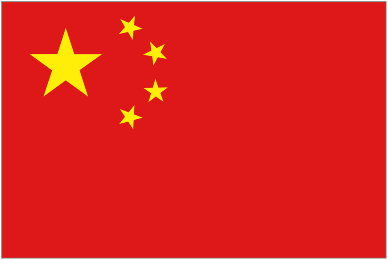




August 6, 1990 Sadako Peace Park, 40th Street & Roosevelt Way, NE, Seattle, Washington (USA). Initiative of conscientious objector Floyd W. Schmoe [1895-2001] who rebuilt homes in Hiroshima (Japan) & won the Hiroshima Peace Prize in 1998. Inscription: "Sadako Sasaki, Peace Child. She gave us the paper crane to symbolize our yearning for peace in the world. A gift to the people of Seattle from Fratelli's Ice Cream. Daryl Smith/b> Sculptor. 1990." Vandalized in December 2005 but repaired. Upper image shows Schmoe & peace cranes. Lower image shows hibakusha Ken Nakano of Kirkland, WA. Entry #1063 in the "Peace Movement Directory" by James Richard Bennett (2001).


November 15, 1951 - Monument to Tamiki Hara, Hiroshima (Japan). Tamiki Hara [1905-1951] was a Hirsohima poet who committed suicide. With a note by Haruo Sato [1892-1964]. Info from Pocket Peace Guide.
March 1952 - It is decided that, under the Hiroshima Peace Memorial City Construction Law, the Peace Memorial Hall, Peace Memorial Museum, City Auditorium, and the Cenotaph for the A-bomb Victims will be constructed in Peace Memorial Park as reminders of the past and contributions to a future of lasting peace."
August 6, 1952 - Defaced January 4, 2012 - Cenotaph for the A-Bomb Victims, Hiroshima Peace Memorial Park, Hiroshima (Japan). Also called "Memorial Monument for Hiroshima, City of Peace." "Carries [an] epitaph which means "please rest in peace, for [we/they] shall not repeat the error." In Japanese, the sentence's subject is omitted, thus it could be interpreted as either "[we] shall not repeat the error" or as "[they] shall not repeat the error". This was intended to memorialize the victims of Hiroshima without politicizing the issue, taking advantage of the fact that polite Japanese speech typically demands lexical ambiguity in the first place. The epitaph was written by Tadayoshi Saika, Professor of English Literature at Hiroshima University. He also provided the English translation, "Let all the souls here rest in peace for we shall not repeat the evil." On November 3, 1983, an explanation plaque in English was added in order to convey Professor Saika's intent that "we" refers to "all humanity", not specifically the Japanese or Americans, and that the "error" is the "evil of war." /// "The dominant Japanese historical narrative about Hiroshima's atom bombing has always shied away from naming the United States as the active agent of nuclear attack, and the engraving on the cenotaph has stirred several related controversies. The epitaph reads: "Please rest in peace; For we shall not repeat the mistake." The ambiguity of this sentence, especially in its original Japanese version, has generated debates about whose mistake and which mistake the sentence references. Many have worried that this 'we' might refer to the Japanese. If so, the sentence would seem to agree with the US claim that the mass killing was necessary to end the war. The municipal government's official clarification on this issue is that the 'we' stands for the anonymous subject of humanity -- namely, each and every one of us who visits the park and pledges peace." [Quoted from "Remembering and Imagining the Nuclear Annihilation in Hiroshima" by Lisa Yoneyama, Getty Conservation Institute, Summer 2002.] /// "The stone chest in the center holds the registry of the names of persons who died from the bombing, regardless of nationality. As of August 6, 2001, the registry comprises 77 volumes that list a total of 221,893 names." Restored 1984-85. #20 of 56 "cenotaphs & monuments" on the Virtual E-Tour. /// "Found defaced [in 2012] with what appears to be golden paint in the early hours..., police said. Paint was sprayed over part of the cenotaph's inscription, according to the police, who are treating the incident as damage to property. A security guard rushed to the cenotaph shortly before 1 a.m. after someone entered the monument site and set off an alarm, according to the police."

About 1953 - Heiwa-dori / Peace Boulevard, Hiroshima (Japan). "Constructed based on the "Hiroshima Peace Memorial City Construction Plan" enacted in 1952. The major elements of the street are four traffic lanes in the middle and two green belts on each side. The green belts extend about 4 km. Most of the trees planted on the green belts were presented by the people around Hiroshima between 1957 and 1958. Peace Boulevard is also called ‘100 Meters Road’ due to its width. Although 24 100-meter-wide roads were planned in some cities damaged during the war, only two in Nagoya and one in Hiroshima have actually been constructed. In addition, two bridges were built on the street make it a special place. The railings of Heiwa-ohashi Bridge and Nishiheiwa-ohashi Bridge were designed by world-renowned Japanese-American sculptor Isamu Noguchi [1904-1988]." Click here for all examples of the phrase "peace memorial."
1953 - Peace Bridge, Peace Boulevard, Nakajima-cho, Naka-ku, Hiroshima (Japan). Just east of Peace Memorial Park & Museum. Bridge rails designed by Japanese-American artist Isamu Noguchi [1904-1988] to resemble the rising sun.




April 1, 1954 - Hiroshima Peace Memorial Park, Hiroshima (Japan). Contains the Hiroshima Peace Memorial Museum, the Hiroshima Peace Bell, and many other peace monuments. See map at top of thie. Left image is air view. Right image shows the cenotaph (1952, right) and Hiroshima Boys Choir (left) during the annual Peace Memorial Ceremony on August 6 (Hiroshima Day). Click here for Wikipedia article. #26 of 56 "cenotaphs & monuments" on the Virtual E-Tour. Click here for all examples of the phrase "peace memorial."

1954 - Hiroshima (Japan) declares itself a "World Federalist City." "During the arduous process of financing and building their Peace [Memorial] Park, the survivors [Hibakusha] also created a World Federalist City committed to what they perceive to be a holy, essential, and interdependent trinity: world brotherhood, world peace, and nuclear disarmament." (Quote from "Folding paper cranes: An atomic memoir" (University of Utah Press, 2005) by Leonard Bird, a US Marine who was exposed to atomic radiation at the Nevada test site and who visited Hiroshima in the 1950's, 1980's and 1990's.) The World Federalist Movement of Japan (WFMJ) was founded on August 6, 1948, in commemoration of the 3rd anniversary of the atomic bombing in Hiroshima.

August 6, 1954 - Memorial Cathedral for World Peace, 4-42 Nobori-cho, Naka-ku, Hiroshima (Japan). Built in 1954 on the initiative of German Jesuit Hugo Enomiya-Lassalle [1898-1990], who witnessed the the atomic bomb in 1945. One of the largest Roman Catholic churches in Asia. Many countries contributed to the cost of construction. Four bells in the 150ft / 46m tower were presented by the German town of Bochum, the organ by Cologne. and the bronze doors by Düsseldorf. The altar was presented by Belgium.



August 8, 1954 - Monument to Those Who Died from the Chuanku-Shikoku Public Works Office, Hiroshima (Japan). Info from Pocket Peace Guide.
NB: Click here for Wikipedia's summry of the "Phoenix," the "Golden Rule" & the Committee for Non-Violent Action (CNVA).
NB: Click here for comments & images received from Jessica Reynolds Shaver Renshaw after the foregoing was uploaded.


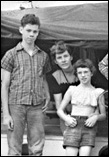


K
E
TC
H
1954 - "Phoenix of Hiroshima," North Fork of Mokelumne River, off Tyler Island, Lodi, California (USA?). "John Gardner (phoenixofhiroshima @comcast.net, 209-570-4070) has already rescued the Phoenix (bottom image) after seeing it listed for free on craigslist [in late 2006 or early 2007], its San Francisco owner simply wanting to get rid of it to avoid paying any more fees to the Oyster Point Marina. Gardner paid a San Francisco boater to tow it to its current location." Constructed in Hiroshima (Japan) by American Quaker Earle Reynolds [1910-1998] (top image). "1954 brought the realization of a dream for Reynolds when he, his first wife Barbara Leonard Reynolds [1915-1990], and two of their three children began an around the world voyage on the Phoenix. They stopped at over one hundred ports, and Earle gave lectures on conditions in Hiroshima. Young Jessica [middle image] documented this trip in her book, which was later published [1958]. When they arrived in Hawaii in 1958, they met the crew of the Golden Rule (qv), Quakers who were on trial for their attempt to sail into the nuclear test zone near Bikini Island to protest nuclear weapons and atmospheric testing. They had been arrested and prevented from completing their mission. After talking with the crew of the Golden Rule, Dr. Reynolds and his family decided to complete the mission in their place. He also believed that the government did not have a right to restrict access to the open ocean. After sailing into the restricted zone, he was arrested and sentenced to two years in prison. This verdict was appealed and eventually overturned." Earle Reynolds founded the Peace Resource Center at the University of California at Santa Cruz (UCSC) in 1975. Barbara Reynolds founded the World Friendship Center in Hiroshima (Japan) in 1965 and the Peace Resource Center at Wilmington College, Ohio, in 1975.

August 5, 1955 - Atomic Bomb Memorial Mound, Hiroshima Peace Memorial Park, Hiroshima (Japan). A vault lies under the mound and contains the ashes of roughly 70,000 victims. #09 of 56 "cenotaphs & monuments" on the Virtual E-Tour. Photo by EWL.

1955 - Japanese stamp depicting the Genbaku Dome (aka A-Bomb Dome), an "unintentional monument" in Hiroshima (Japan). Peace Memorial Park and Peace Memorial Museum were created this year (10th anniversary of the A-Bomb).
1955 - The Peace Memorial Hall and the Peace Memorial Museum open. The volunteer citizen group A-bomb Materials Collection Support Association (now called the A-bomb Materials Preservation Association) leads an effort that involves many Hiroshima residents in the gathering of materials related to the atomic bombing.



August 24, 1955 - Hiroshima Peace Memorial Museum, 1-2 Nakajima-cho, Naka-ku, Hiroshima (Japan). At site of the atomic bomb on August 6, 1945. New museum building (1994, left) + original musuem building (1955, center) + International Conference Center (1989, right). Click here for a museum guide with many good photos. Click here for Wikipedia article. One of 3 institutions hosting 6th International Conference of the International Network of Museums for Peace (INMP) in October 2008. One of 9 Japanese institutions described in brochure for 6th International Conference of the INMP in 2008. #27 of 56 "cenotaphs & monuments" on the Virtual E-Tour. Click here for all examples of the phrase "peace memorial."

August 6, 1956 - Figure of the Merciful Goddess of Peace, Hiroshima (Japan). Includes pre-1945 map of Nakajima-hon District. Info from Pocket Peace Guide.

August 3, 1957 - Pond of Peace, Hiroshima (Japan). Surrounds the Cenotaph. Enlarged in 1964 to accomodate the Flame of Peace. Info from Pocket Peace Guide.

August 6, 1957 - Monument to the Former Zatmoku-cho, Hiroshima (Japan). Zatmoku means lumber, and lumber merchants were concentrated here in the Edo Period. Pocket Peace Guide.

August 6, 1957 - Monument to the Employees of the Coal Control-related Comany, Hiroshima (Japan). Info from Pocket Peace Guide.



May 5, 1958 - Children's Peace Monument, Peace Memorial Park, Hiroshima (Japan). The monument is topped by a statue of Sadako Sasaki [1943-1955] . Dedicated on Children's Day. Inscribed on bell: "A Thousand Paper Cranes. Peace on Earth and in the Heavens" by Hideki Yukawa [1907-1981]. /// Encircled by cases in which to hang origami peace cranes. #16 of 56 "cenotaphs & monuments" on the Virtual E-Tour..
1958 - The Hiroshima Restoration Exposition is held in and around the Peace Memorial Museum.

August 5, 1960 - Statue of "Mother & Child in the Storm", in front of Hiroshima Peace Memorial Museum, Hiroshima (Japan). Presented by "Japan Council Against Atomic & Hydrogen Bombs" during "Fifth World Conference." Erected with help of donations collected by "Hiroshima Municipal Federation of Women's Associations." The statue depicts a mother holding an infant tightly in one arm and protecting another with the determination to survive whatever suffering may confront her.#31 of 56 "cenotaphs & monuments" on the Virtual E-Tour.

Date? - Statue of Sadako Sasaki, Nobori-cho Elementary School, Hiroshima (Japan). "This is the elementary school that young Sadako attended until she was hospitalized with leukemia in 1954."

August 15, 1960 - Monument of Prayer, Hiroshima (Japan). Sculpted by Yoshizumi Yokoe. Info from Pocket Peace Guide.


September 1, 1960 - Peace Fountain, Hiroshima (Japan). 1-meter high x 4-meters wide. Water drips from the mouth of a ceramic lion. Info from Pocket Peace Guide.


August 6, 1961 Hiroshima Second Middle School A-bomb Memorial Monument, Hiroshima (Japan). Info from Pocket Peace Guide.


August 6, 1963 - Monument Dedicated to Sankichi Toge, Hiroshima (Japan). Toge was a poet & peace movement leader. Info from Pocket Peace Guide.

August 6, 1963 - Memorial Monument for the Hiroshima Municipal Commercial & Shipbuilding Industry Schools, Hiroshima (Japan). Info from Pocket Peace Guide.


June 27, 1964 - Literary Monument Dedicated to Miekichi Suzuki, bank of Motoyasu River near the Genbaku Dome, Hiroshima (Japan). By Katsuzo Entsuba [1905-2003], a sculptor and judge for the Nitten Exhibition (the famous art exhibition in Japan). Miekichi Suzuki [1882-1936] was a pioneer writer who raised the quality of Japanese juvenile stories, songs and folktales to the level of "literature." The monument has two parts (each with a dove of peace). One is bust of Miekichi. The other is bronze figures of a boy and a girl sitting on a granite base in the shape of a book. Information from Michiko Yamane. Not on Virtual E-Tour. Note Clock Tower of Peace in background of lower image.


August 1, 1964 - Flame of Peace, Hiroshima Peace Memorial Park, Hiroshima (Japan). Eternal flame designed by Kenzo Tange. Pedestal suggests the shape of a pair of hands with open palms. The flame Has burned continuously since 1964 and "will remain lit until all nuclear bombs on the planet are destroyed and the planet is free from the threat of nuclear annihilation."

August 6, 1964 - Monument for the Volunteer Army Corps, Hiroshima (Japan). Info from Pocket Peace Guide.

September 20, 1964 - Hiroshima Peace Bell, Peace Memorial Park, Hiroshima (Japan). Large bell, permanently outdoors. Surface of the bell is a map of the world. Its "sweet spot" is an atomic symbol. Designed by Masahiko Katori [1899-1988]. Cast by Oigo Bell Works, Takaoka, Toyama Prefecture (Japan). #08 of 56 "cenotaphs & monuments" on the Virtual E-Tour. Middle image shows Ram Uppuluri of Oak Ridge, Tennessee, at the bell on July 15, 1993. Middle image courtesy of Herman Postma.

November 1964 - Fountain of Prayer, Hiroshima (Japan). To solace the souls of those who died crying, "Water, please, water." For Info from Pocket Peace Guide.

August 3, 1965 - Friendship Monument, Hiroshima (Japan). Depicts hand holding by people from all four quarters of the globe. Erected by Japan Association of Casualty Insurance Underwriters. Info from Pocket Peace Guide.

August 6, 1965 - Monument of Zensonpo, Hiroshima (Japan). Zensonpo is the All Japan Casualty Insurance Labor Union. Info from Pocket Peace Guide.

August 6, 1965 - World Friendship Center (WFC), 8-10 Higashi Kan-on, Nishi-ku, Hiroshima (Japan). Founded on 20th anniversary of the bomb by American Barbara Leonard Reynolds [1915-1990] who also founded the Peace Resources Center (PRC) at Wilmington College of Ohio (USA) in 1975. "Not only a 'home away from home' for travelers to Hiroshima, it is a place where local Hiroshima residents volunteer their hospitality of peace in a variety of activities." Supported by Brethren Volunteer Service (BVS) & by the American Committee of the WFC, currently chaired by Mary Ann Albert of Warsaw, Indiana (USA).



May 9, 1966 - Statue of Peace ("New Leaves"), in front of Hiroshima Peace Memorial Museum, Hiroshima (Japan). By sculptor Katsuzo Entsuba [1905-2003]. Built by Hiroshima South District Rotary Club on the club's 10th anniversary. Depicts girl with a faun. Inscribed with poem by Dr. Hideki Yukawa (first Nobel laureate from Japan): "O god of evil, do not come this way again. This place is reserved for those who pray for peace." #32 of 56 "cenotaphs & monuments" on the Virtual E-Tour.




1966 - Peace Pagoda, on hill north of railway station, Hiroshima (Japan). Nipponzan Myohoji Buddhist Order. Commemorates lives lost in the A-bomb blast, and contains gifts of Buddha's ashes from the then Prime Minister of India and from Mongolian Buddhists. Right image is view of Hiroshima from the peace pagoda. Visited by Ralph Hutchison.
July 31, 1966 - Merciful Consoling Kannon for Mobilized A-bomb Victim Students, on left bank of Motoyasu-gawa River, Hiroshima (Japan). Kannon = Goddess of Mercy. #51 of 56 "cenotaphs & monuments" on the Virtual E-Tour. Photo by EWL. Note stone lantern & peace pole. Statue of the Consoling Kannon is virtually covered with garlands of origami peace cranes.



1967 - Hiroshima Peace Bell, Peace Memorial Museum (East Building), Hiroshima (Japan). Small bell, displayed indoors (left image), and rung outdoors (right image) during the annual Peace Memorial Ceremony on August 6 (Hiroshima Day). Designed by Masahiko Katori [1899-1988]. Has calligraphy by Shigeru Yoshida [1878-1967], former prime minister of Japan. Cast by Oigo Bell Works, Takaoka, Toyama Prefecture (Japan). Left image courtesy of Satoko Nishizawa (Hiroshima Boys Choir).

July 15, 1967 - Memorial Tower to the Mobilized Students, on left bank of Motoyasu-gawa River, Hiroshima (Japan). 12-meter tower with Goddess of Peace at its base. #42 of 56 "cenotaphs & monuments" on the Virtual E-Tour.



July 15, 1967 - Goddess of Peace, Peace Memorial Park, Hiroshima (Japan). "Represents 3 religions: Angel's wings for Christianity, Face of Buddha, & Shinto emblem on belt. Purpose is to promote peace among all religions." Both images show garlands of origami peace cranes on both sides of the statue.


August 2, 1967 - Monument for the Hiroshima Gas Corporation, Hiroshima (Japan). A statue of Jizo, gardian deity of children. Info from Pocket Peace Guide.


August 6, 1967 - Monument of the Hiroshima District Lumber Control Corporation, Hiroshima (Japan). Info from Pocket Peace Guide.
October 28, 1967 - Clock Tower of Peace, Peace Memoial Park (northern end), Hiroshima (Japan). Chimes every day at 8:15 am to plea for "No More Hiroshimas." Constructed by the Hiroshima Rijo Lions Club. #07 of 56 "cenotaphs & monuments" on the Virtual E-Tour.

April 10, 1970 - Kankokujin Genbaku Giseisha Irei Hi / Korean Atom Bomb Victims' Memorial, Peace Memorial Park, Hiroshima (Japan). Engraved "Souls of the dead ride to heaven on the backs of turtles" and stands on a turtle-shaped base. Originally erected at the western end of Honkawa Bridge. Moved into the park in July 1999. #11 of 56 "cenotaphs & monuments" on the Virtual E-Tour.



August 4, 1971 - Monument of the A-bombed Teachers & Students of National Elementry Schools, Hiroshima (Japan). Info from Pocket Peace Guide.


August 6, 1971 - Monument for the A-bomb Victims from the Hiroshima Agricultural Association, Hiroshima (Japan). Info from Pocket Peace Guide.

August 2, 1972 - Peace Cairn, Hiroshima Memorial Peace Park, Hiroshima (Japan). Donated by the cities of Dudley (England) & Fort William (Scotland). Text of inscription: "This particular stone was hewn from Britain's highest mountain BEN NEVIS FORT WILLIAM SCOTLAND, 2nd August 1972." Info from Pocket Peace Guide. See 1945 Peace Cairn on Ben Nevis & 1985 Peace Bell in Fort William.

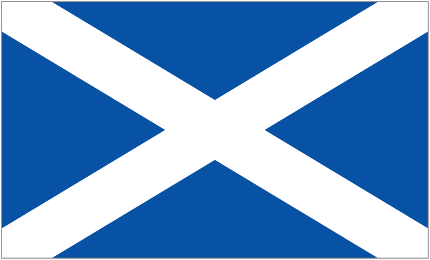

February 1973 - Monument of the Former North Tenjin-machi Area, Hiroshima (Japan). Info from Pocket Peace Guide.

October 30, 1974 - Tower of Peace, Greenbelt in front of Peace Memorial Museum (East Building), Hiroshima (Japan). Erected by the "Hiroshima Prefectural Committee for the Erection of a Tower to Commemorate [the 20th anniversary of] Hiroshima's Declaration of Itself as a World Federalist City." Note Japanese logo is identical to old UWF logo in USA. Five sides which symbolizing the five continents. Front is brown granite, the other four sides Grecian marble. Designed by Masami Kawamura. NB: Not shown in the Virtual E-Tour. Information courtesy of Michiko Yamane.

After 1947 - License plate topper with "World Peace Thru World Law" & logo of United World Federalists (UWF).


August 1975 - Monument to the Employees of the Hiroshima Post Office, Hiroshima (Japan). Info from Pocket Peace Guide.

August 2, 1977 - Statue of a Prayer for Peace, Hiroshima (Japan). Sculpted & donated by Katsuzo Entsuba [1905-2003]. Info from Pocket Peace Guide.


May 5, 1978 - Peace Kannon Bosatsu, Hiroshima (Japan). "The statue is 8 meters high and made from aluminium." By Seito Kitamura [1884-1987] who sculpted the huge statue which the centerpiece of Peace Memorial Park in Nagasaki. Where is this statue in Hiroshima?

September 8, 1979 - Monument to Dr. Marcel Junod, in front of Hiroshima Peace Memorial Museum, Hiroshima (Japan). Dr. Marcel Junod [1904-1961] of the International Committee of the Red Cross (ICRC) entered Hiroshima on September 8, 1945, and began treating survivors while carrying out studies of the damage. #29 of 56 "cenotaphs & monuments" on the Virtual E-Tour.



June 24, 1982 - Mayors for Peace. "At the 2nd UN Special Session on Disarmament held at UN Headquarters in New York, Mayor Takeshi Araki [1916-1994] of Hiroshima proposed a new Program to Promote the Solidarity of Cities toward the Total Abolition of Nuclear Weapons. This proposal offered cities a way to transcend national borders and work together to press for nuclear abolition. Subsequently, the mayors of Hiroshima and Nagasaki called on mayors around the world to support this program. Mayors for Peace is now composed of cities around the world that have formally expressed support for the program Mayor Araki announced in 1982. As of March 1, 2010, membership stood at 3,680 cities in 135 countries and regions."
August 5, 1982 - Hiroshima Monument for the A-bomb Victims, bank of Motoyasu River, opposite Peace Memorial Park, Hiroshima (Japan). Inlaid with tiles melted by the A-bomb and collected from the river durng restoration in 1981. Theme "Wind of No Return" was created by Professor Hisashi Akutagawa of Hijiyama Women's Junior College. #47 of 56 "cenotaphs & monuments" on the Virtual E-Tour.
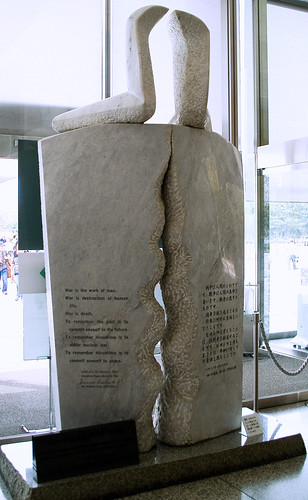
February 25, 1983 - Monument Commemorating Pope John Paul II's Appeal for Peace, Hiroshima Peace Memorial Museum (east building), Hiroshima (Japan). Commemorates visit to Hiroshima by Pope John Paul II [1920-2005] on February 25, 1981. #54 of 56 "cenotaphs & monuments" on the Virtual E-Tour.

November 2, 1983 - Aioi Bridge, Hiroshima (Japan). Target of the atomic bombing because of its unique T-shape. The 30 cm thick floor of the bridge heaved upwards because of the powerful blast pressure that bounced off the river below. It was heavily damaged. After the war, it was temporarily repaired and used until its restoration in 1983. #06 of 56 "cenotaphs & monuments" on the Virtual E-Tour.


June 24, 1984 - Prayer Monument for Peace, Hiroshima (Japan). Marks sister club ties between Lions Clubs of Hiroshima & Nagasaki. Info from Pocket Peace Guide.
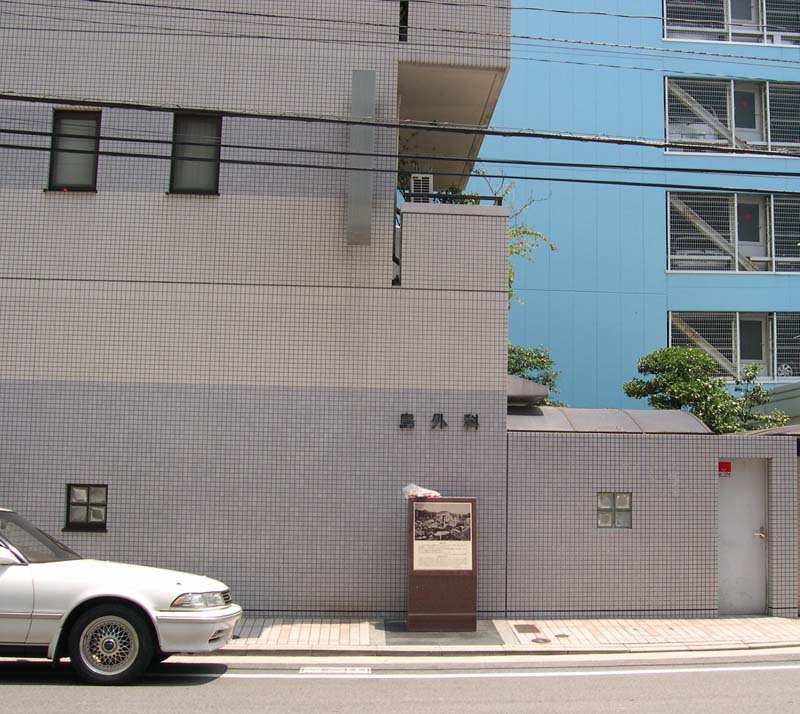


Date? - A-Bomb Disaster Marker, Shima Hospital, 29-2 Saiku-machi, Hiroshima (Japan). About 200 meters from Peace Memorial Park. Marks the hypocenter of the A-Bomb explosion on August 6, 1945. #43 of 56 "cenotaphs & monuments" on the Virtual E-Tour. Right image shows Shima Hospital. Marker is on hospital wall at street level.


November 12, 1987 - Prayer Haiku Monument for Peace, Hiroshima (Japan). Inscribed with haiku by former Prime Minister Yasuhiro Nakasone. Info from Pocket Peace Guide.
April 1988 - Honkawa Elementary School Peace Museum, on right bank of Honkawa River, Hiroshima (Japan). Occupies portion of school building damaged by the A-bomb on August 6, 1945. #01 of 56 "cenotaphs & monuments" on the Virtual E-Tour. Click here for Wikipedia article.
1988 - Okunoshima Poison Gas Museum, Okunoshima Island (Japan). Near Hiroshima. "'Established in order to alert as many people as possible to the dreadful truths about poison gas.' As expressed by the curator Murakami Hatsuichi to The New York Times, 'My hope is that people will see the museum in Hiroshima City and also this one, so they will learn that we [Japanese] were both victims & aggressors in the war. I hope people will realize both facets and recognize the importance of peace.'"


August 5, 1988 - Monument Dedicated to Construction Workers & Artisans, Hiroshima (Japan). Info from Pocket Peace Guide.
July 1989 - International Conference Center Hiroshima (ICCH), next to Hiroshima Peace Memorial Museum, Hiroshima (Japan). Five floors (three above ground and two basement floors). Largest hall can accomodate 1,504 persons.
1994 - Ginkgo Tree, Hosen-ji Temple, Tera-machi, Naka-ku (near Nishihongan-ji & Zensho-ji temples), Hiroshima (Japan) "About 1130 m away from the hypocenter. Appeared to bud after the blast (the temple itself was destroyed). In 1994 it was decided to leave it there and adjust the temple to it, so now the main building has stairs in front divided into left-and right hand sides, protecting the Ginkgo inside this U-shape. Engraved on it 'No more Hiroshima' and people's prayers for peace. This tree has thus become an international symbol. Estimated planting 1850." NB: Same website also shows five other surviving "A-bombed trees." Tip from Gerard Lössbroek.

July 12, 1995 - "Reconcilation," International Conference Center Hiroshima, Peace Memorial Park, Hiroshima (Japan). Statue by Josefina de Vasconcellos [1905-2005]. One of four copies of an original statue at University of Bradford (England). Click here to see all five statues. Photo by EWL. Photo shows Prof. Peter Van Den Dungen, University of Bradford (far left), Schera Chadwick & Shigeko Uppuluri.

Date? - Nagasaki Peace Bell, Peace Memorial Museum (East Building), Hiroshima (Japan). Replica of the Western style bell from Urakami Cathedral which survived the A-bomb blast on August 9, 1945. Presented by Hiroshima-Nagasaki City Affiliation of Peace & Culture. Photo by EWL.
August 9, 1995 - Nagasaki Peace Bell, Hiroshima City University, Hiroshima (Japan). Replica of the Western style bell from Urakami Cathedral which survived the A-bomb blast on August 9, 1945. Presented by Rengo Nagasaki to Rengo Hiroshima on 50th anniversary of the Nagasaki bomb.

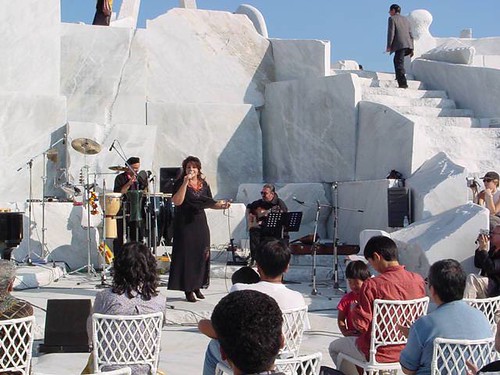
October 2000 - Miraishin no Oka / Hill of Hope, Kosanji, Setoda Island--near Hiroshima (Japan). Also called Peace Mountain. Commissioned by the Kosanji Temple Museum, the culmination of master sculptor, Kuetani Kazuto's work since 1993. Represents an island floating in the sea." "Inaugurated with a concert of Neapolitan Music" (right image).
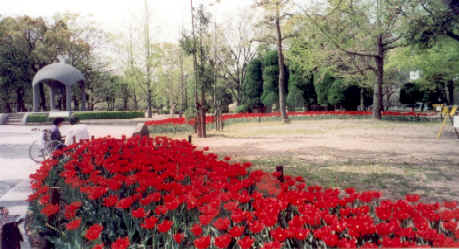

April 17, 2001 - International Peace Garden, Peace Memorial Park, Hiroshima (Japan). Near the Peace Bell. One of many International Peace Gardens in different countries. Presented to Hiroshima by The Hague (Netherlands).


August 6, 2001 - Peace Watch Tower, Hiroshimna (Japan). "Displays panels with numbers & cogwheels. Top panel indicates number of days since the A-bomb was dropped on Hiroshima. Lower panel indicates the number of days since the last nuclear test. The museum turned back the lower paenl from 506 to 28 on October 13, 2010, the number of days after the USA's subcritical nuclear test on September 15, 2010. "It's a shame that the USA has shown its intention to retain nuclear weapons," said Koichiro Maeda, director of the museum, who pressed the clock's button... The peace clock was reset for the second time since North Korea's nuclear test on May 25, 2009, and for the 13th time since it was installed on August 6, 2001."
April 2002 - Fukuro-machi Elementary School Peace Museum, 6-36, Fukuromachi, Naka-ku, Hiroshima (Japan). Occupies portion of school building damaged by the A-bomb on August 6, 1945. Click here for Wikipedia article.



August 1, 2002 - Hiroshima National Peace Memorial Hall for the Atomic Bomb Victims, Hiroshima Peace Memorial Park, Hiroshima (Japan). Largely underground. Includes fountain, Hall of Remembrance, Victims' Information Area, temporary exhibition area, and library. Click here for the Wikpedia article. #56 of 56 "cenotaphs & monuments" on the Virtual E-Tour. Click here for all examples of the phrase "peace memorial."



August 2, 2003 - Norman Cousins Monument, in front of Hiroshima Peace Memorial Museum, Hiroshima (Japan). Honors achievements of Norman Cousins [1915-1990], "including promotion of the moral adoption project for A-bomb & war orphans, his efforts in helping female A-bomb survivors receive keloid treatment in the US, & his continued appeal for elimination of nuclear weapons." Right image shows adjacent Junod monument (qv). Left image by EWL. #53 of 56 "cenotaphs & monuments" on the Virtual E-Tour.


July 30, 2005 - Les Portes de la Paix / Gates of Peace, Peace Boulevard (opposite Peace Memorial Museum), Hiroshma (Japan). Ten gates representing the 9 circles of Hell in Dante's Inferno, plus Hiroshima. By French artist Clara Halter. #52 of 56 "cenotaphs & monuments" on the Virtual E-Tour. Click here to see other peace monuments by Halter in Paris, St. Petersburg & Jerusalem. Photo by EWL.



M
E
M
O
R
I
A
LJune 12, 2011 - Barbara Reynolds Monument, Peace Memorial Park, Hiroshima (Japan). Adjacent to the Norman Cousins & Marcel Junod monuments (qv). Inscription: I, too, am a Hibakusha. Hibakusha -- they are the inspiration for all my peace efforts. My heart is always with Hiroshima. [signed] Barbara Reynolds. Special Honorary Citizen of Hiroshima. Founder of World Friendship Center, Hiroshima. World Friendship Center, 2011." Barbara Leonard Reynolds [1915-1990] founded the World Friendship Center (WFC) in Hiroshima & Peace Resource Center (PRC) in Wilmington, Ohio (USA). See web pages about boats & ships & about peace monuments in Hiroshima for the sailboat "Phoenix of Hiroshima" which Reynolds & her family built in Hiroshima in 1954. Click here for additional information. Left image shows Jessica Reynolds Renshaw bowing to her mother's monument. Right image shows (left to right) Tony Reynolds, Larry & JoAnn Sims (WFC), Jessica Reynolds Renshaw, Jerry Renshaw & Steve Leeper (chair of Peace Culture Foundation).

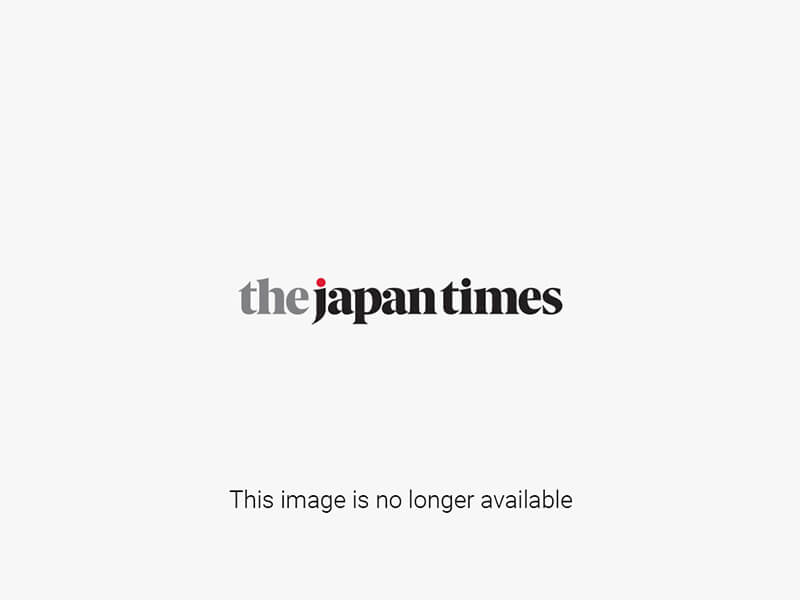
June 9, 2016 - Origami Peace Cranes, Peace Memorial Museum, Hiroshima (Japan). Donated (and said to have been folded) by US President Barak Obama during his visit to Hiroshima.







July 9, 2016 - Phoenix of Hiroshima, North Mokelumne River, near Isleton, Sacramento County, California (USA). Sailboat sunk in 2010. Found on July 9, 2016, by boat from Sacramento County Sherriff's Department (upper right image) using sonar (upper left image). The boat was constructed near Hiroshima (Japan) by American Quaker Earle Reynonds [1910-1998] in 1954. He & his family used it to sail around the world, then they deliberately sailed into the American nuclear testing zone in the Pacific Ocean in 1958 to protest nuclear weapons. The Reynolds family now hopes to raise the historic 62-year old boat, then transport it to a boatyard in Port Townsend, Washington, for restoration (like the Golden Rule). Information & first 3 images courtesy of Earle's daughter Jessica Reynolds Renshaw (lower left image). Lower right image is screen shot from Google Earth (Street View as of June 2007) at or very near the location of the sinking in 2000.


September 2016 - Observation Tower, Hiroshima Orizuru Tower (Paper Crane Tower), Hiroshima (Japan). "Has views from the 12th floor of Peace Memorial Park & Atomic Bomb Dome. Completed on July 6 ahead of opening to sightseers on July 11. Includes a chimney-like glass wall 4 meters by 50 meters running the height of the tower that is viewable from the building’s exterior. Visitors will be able to toss their handmade origami paper cranes into it from the 12th floor with the aim of filling the entire space as a monument for peace...with about a million paper cranes to fill up the 'paper crane wall.' Owned by car dealer Hiroshima Mazda Co., the tower will house souvenir shops, offices, rental conference rooms & other facilities. Admission to the observation deck is 1,700 yen ($16.80) for adults. 'We hope the tower will become place for people to contemplate peace,' a Hiroshima Mazda representative said."



Future - World Wall for Peace, Hiroshima (Japan). "Tiles painted in Berkeley, California, for inclusion in a World Wall for Peace (WWFP) in Hiroshima...are currently on display in the International Room of the Hiroshima Museum [sic], and are awaiting a site where they can be permanently installed." Where are these tiles?


2019? - Restored Water Basin, Nigitsujinja Shrine, Hiroshima (Japan). "A shrine here is turning its outdoor water basin that was damaged by the 1945 US atomic bombing into a monument to remind people of the horrors of nuclear war>. Repair work to the stone washbowl along the pedestrian approach to Nigitsujinja shrine started in January [2017] as part of a project to redevelop surrounding areas. The shrine is situated 1.8 kilometers northeast of ground zero, and its main hall was destroyed by fire. A temporary aid station is said to have been set up in the shrine’s precincts to provide accommodation for evacuees. The atomic explosion caused stone lanterns to collapse & damaged pine trees at the shrine. The water basin became chipped & cracked. The object was rendered unusable because it leaked. The shrine decided to mend it so worshippers can purify their hands & mouths before paying their respects at the shrine. 'As there remain fewer objects that remind people of the atomic bombing now, preserving the washbowl is significant,' said Kazutomo Asano, 75, chief priest of Nigitsujinja. 'I want people who will use it to think of world peace.' The minimum necessary repairs have been made so that scratches & damage caused by the atomic bombing will be preserved. It is estimated that the project will take two years to complete, as a new roof will be installed & surrounding areas redeveloped."